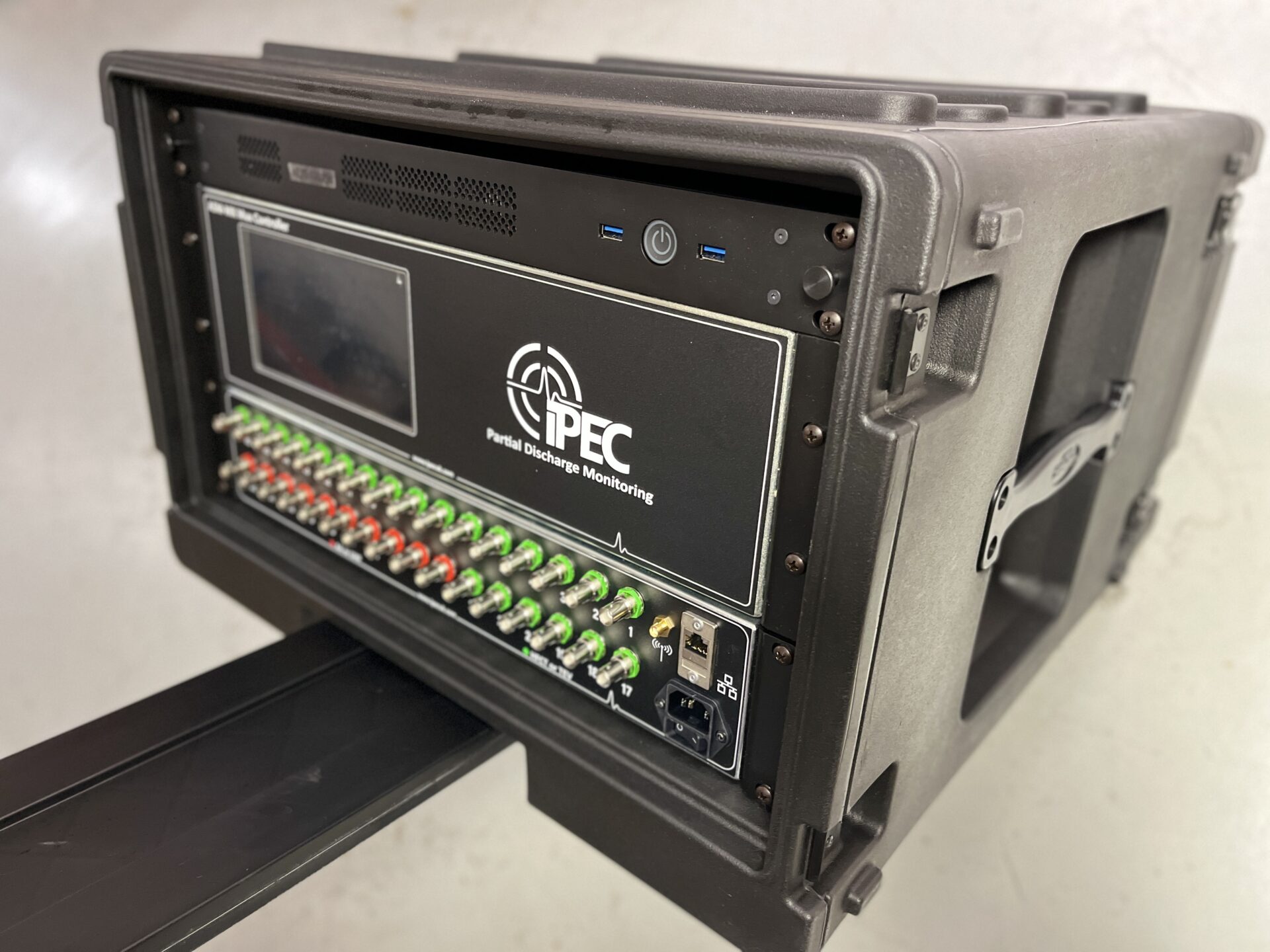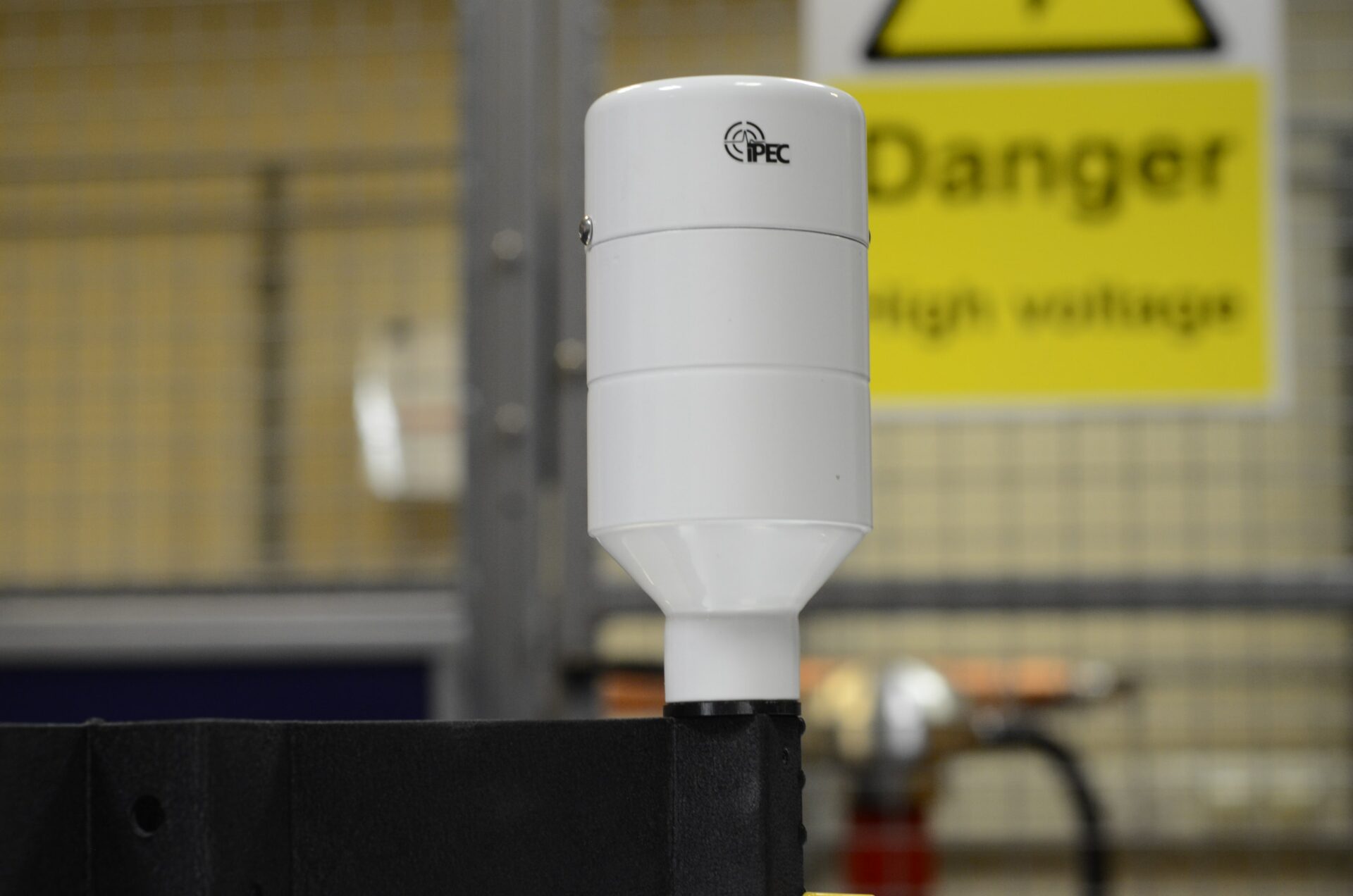
IPEC ASM Systems – Permanent PD Monitor
Brand :
IPEC
Categories :
Partial Discharge Monitors
The ASM is a permanent PD monitor for cables, switchgear and other high voltage assets. The ASM can be configured for any number of PD sensor channels. If excessive discharge is detected, the ASM raises an alarm that can be configured either locally or by email. This enables the long-term assessment of plant conditions to be carried out quickly and easily, from any remote computer. Suitable for all types of substation equipment, the ASM proves a powerful tool to an asset manager, providing continuous on-line condition data at the touch of a button.
Flexible design
multiple form factors mean the ASM can be used in large or small sites, harsh conditions, and where traditional system cannot be deployed
Automated Analysis
ASM will automatically detect and identify PD, without the need for manual analysis
Continuous Monitoring
24/7 PD Monitoring, ensures PD is quickly detected before failures occur
Worlds Most Advanced System
ASMs cover more assets across the globe than any other PDM system
Specifications
 On-line PD detection – The ASM uses PD sensors that couple to the HV network and equipment non-intrusively and on-line such that no disconnection of the circuits is required
On-line PD detection – The ASM uses PD sensors that couple to the HV network and equipment non-intrusively and on-line such that no disconnection of the circuits is required
Fully Customisable – The monitor is enclosed in a 19″ cabinet allowing for customisable options, such as cooling, UPS, internal power baton and integration with existing equipment
Remotely Accessible – Using any of a wide range of communication protocols, the ASM automatically downloads to a central database from where it can be viewed on the analysis website from any smart device
PD Monitor Web Based Data Analysis
Partial discharge data collected from distributed PD Monitor network is stored on a central database and is hosted by IPEC. Customers have direct password-protected access to this data via the Internet, allowing them to browse the data and analyse plant condition from any PC.
Condition information presented like this can be used for targeting scheduled maintenance work before the failure happens, improving network reliability and prioritising asset replacement.
Based on the magnitude of activity levels recorded and the trend in that activity, a ‘League Table’ is automatically generated once every 24 hours. This table gives a clear and quantitative representation of the condition of monitored high voltage assets at any given moment.
ASM Series
ASM-Mini: up to 4 channels (sensors), IP55 or above
ASM-Remote: up to 20 channels (sensors), IP55 or above
ASM-Central: any number of channels (sensors)
 Sensors are distributed around the substation according to the monitoring requirements. Both active (with integral amplifiers) and passive transducers are compatible including the following:
Sensors are distributed around the substation according to the monitoring requirements. Both active (with integral amplifiers) and passive transducers are compatible including the following:
High Frequency CTs – for cable PD detections
Capacitively Coupled – for TEV (Switchgear) PD detection
Airborne Acoustic – for Surface tracking or corona
Ultra High Frequency (UHF) Sensor – for GIS internal PD detection
Temperature and Humidity – environment measurements
Up to 128 sensors can be monitored by a single ASM
 The EHV-PDM is a PD monitoring system designed for application on critical EHV and distributed assets, where the monitoring point could be many hundreds of metres or tens of kilometres apart.
The EHV-PDM is a PD monitoring system designed for application on critical EHV and distributed assets, where the monitoring point could be many hundreds of metres or tens of kilometres apart.
Fibre-linked monitoring points transmit PD data over long distances to the main monitoring unit, which then processes the data and displays the results on a secure customer web front end.
 On-line PD Detection – The EHV-PDM uses PD sensors that couple to the HV network and equipment on-line and non-intrusively, as so no disconnection of the circuits is required.
On-line PD Detection – The EHV-PDM uses PD sensors that couple to the HV network and equipment on-line and non-intrusively, as so no disconnection of the circuits is required.
Remotely Accessible – Using any of a wide range of communication protocols, the EHV-PDM automatically downloads data to a central database; from where it can be viewed on a powerful analysis website.
Long Distance Monitoring – The key design of the EHV-PDM system is to allow for cost effective remote monitoring of assets which are usually inaccessible. Examples include joints along an EHV cable or cables terminations in wind farm arrays.

Local alarms and email alarms
Automated generation of Criticality league table
Supports HFCT, TEV, AE and UHF PD sensors
Trend Analysis and Reporting
Remote DAQ Unit (RDU)
Each RDU is mounted locally to the monitoring point. The system is linked to the previous and next RDU in the chain via a fibre optic. RDUs are connected to up to 4 transducers.
The RDU digitises the analogue signal received from the connected sensors before converting this into an optical signal. This is then transmitted down the fibre link and back to the EHV-PDM monitoring unit. Each RDU has a unique signature to ensure that signals received by the EHV-PDM are correctly recorded.
 A client specific secure website is used for the review and analysis of individual asset conditions. This powerful tool allows users to drill down from a basic condition overview to highly detailed data, including sampled PD wave shapes when expert interpretation is required.
A client specific secure website is used for the review and analysis of individual asset conditions. This powerful tool allows users to drill down from a basic condition overview to highly detailed data, including sampled PD wave shapes when expert interpretation is required.
















